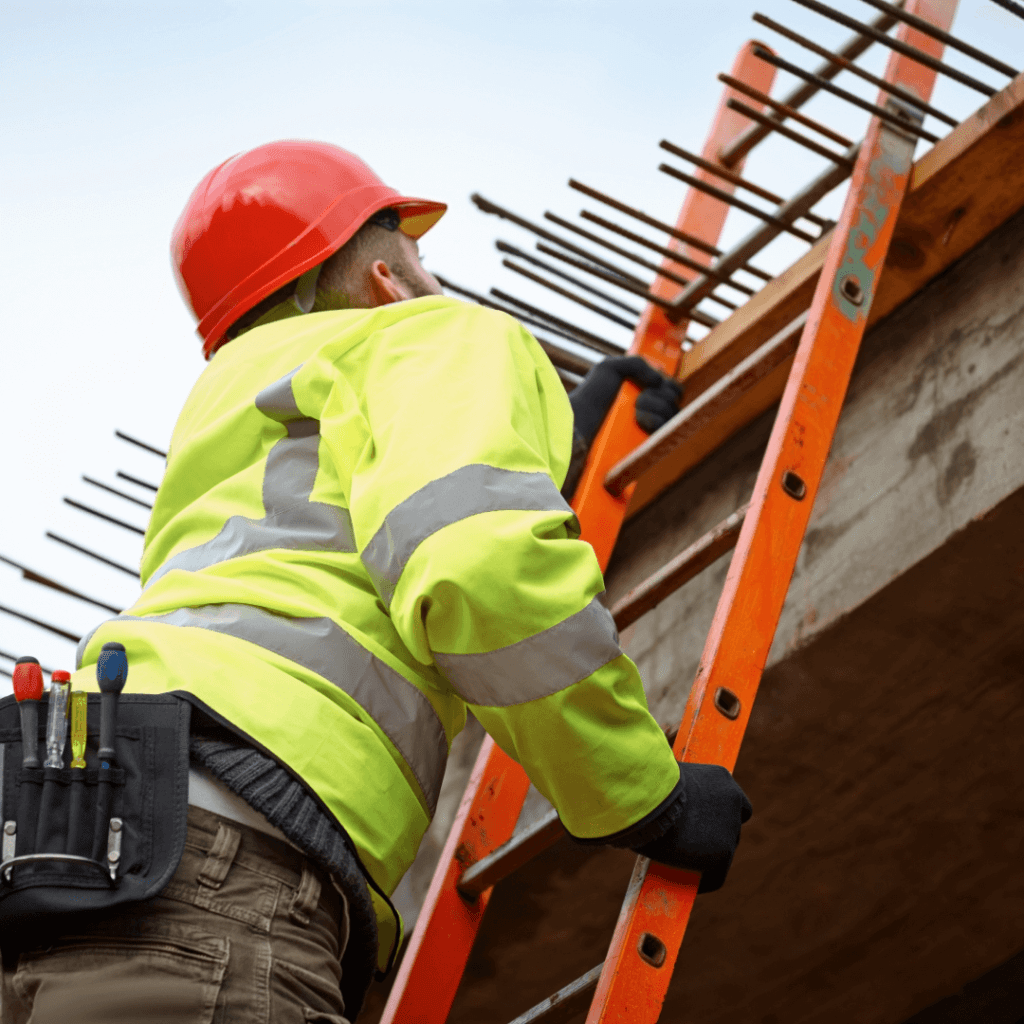✔️Quick Overview
Ladder safety becomes even more critical during hot weather, as heat-related fatigue, dehydration, and poor focus increase the risk of falls. At Karl Environmental, we help teams stay ahead of these seasonal hazards with targeted training, site audits, and real-world safety strategies. Common missteps—like skipping PPE or rushing in the heat—can lead to serious incidents. To maintain ladder safety, hydrate early, follow the 3-point contact rule, inspect equipment daily, and train for signs of heat stress. Every safe climb starts with smart planning.
Stay Focused When the Heat Rises
When temperatures soar, ladder safety often slips. Teams working on lifts, scaffolding, or ladders in full sun are particularly vulnerable to fall-related accidents due to heat exhaustion, dehydration, and fatigue. At Karl Environmental, we help organizations recognize these summer-specific hazards before they lead to injury.
Longer daylight hours and compressed job timelines often pressure crews to “push through.” But that mindset can turn simple tasks into serious risks when workers are hot and tired. Let’s break down why ladder safety needs to remain a top priority in extreme heat—and how your team can respond.
Why Heat Makes Working at Heights More Dangerous
Working at elevation requires mental clarity and physical control. Summer heat makes both harder.
- Sweaty palms reduce grip strength
- Dehydration slows reflexes and reaction time
- Heat stress clouds judgment and shortens attention span
Even highly experienced team members may overlook safety steps when fatigued or rushing to finish before the day gets hotter.
According to OSHA and CDC reports:
- 20,000+ ladder-related injuries happen annually in the U.S.
- Falls remain a top cause of workplace fatalities—especially in maintenance and construction
- Heat-related illnesses spike between June and August, increasing job-site risks
This isn’t just about staying cool—it’s about staying in control.
Spotting Shortcuts Before They Become Incidents
In our job site audits and training sessions, we often see a common pattern of risky behavior in hot weather. These aren’t just bad habits—they’re predictable responses to heat stress:
🔹 Rushing to “beat the heat” and skipping checks
🔹 Carrying tools while climbing instead of using holsters or belts
🔹 Forgoing PPE like gloves or harnesses because it feels too hot
🔹 Overreaching to avoid repositioning a ladder or lift
🔹 Ignoring signs of fatigue like dizziness or confusion
🔹 Poor on-site communication due to mental and physical strain
These actions may seem small in the moment—but in high-heat conditions, they can lead to severe outcomes. Regular reminders, pre-shift check-ins, and a strong safety culture help break the cycle.
“Safety isn’t just protocol—it’s our responsibility. In extreme heat, fatigue becomes as dangerous as height. That’s why at Karl Environmental, we ensure every climb is planned, every break is earned, and every worker returns home safely.”
— Ed Karl, Owner & Founder
5 Smart Moves to Stay Safe in the Heat
Hydrate Often and Early.
Don’t wait for thirst to kick in. Workers should begin hydrating before the shift and continue throughout the day. Heat can impact judgment before dehydration even feels obvious.
Stick to the 3 Points of Contact Rule.
At any time, two feet and one hand—or two hands and one foot—should be in contact with the ladder. This one habit can prevent slips caused by sweat or fatigue.
Inspect Your Equipment Daily.
Ladders exposed to UV or moisture can weaken over time. Look for cracks, warping, or rusted hardware. Don’t assume yesterday’s check still applies today.
Use the Right Gear, the Right Way.
Tool belts, pulleys, and harnesses are designed to prevent strain and accidents. Wearing less PPE in hot weather might feel easier—but it raises the risk.
Train for the Signs of Heat Stress.
Teach your team how to recognize symptoms early: dizziness, heavy sweating, confusion, and fatigue. Catching these signs quickly can prevent falls and medical emergencies.
How Fast Focus Fades as Temperatures Climb
| Temperature (°F) | Cognitive Impact | Ladder Safety Risk |
| 70–80 | Normal | Low |
| 81–90 | Minor fatigue | Moderate |
| 91–100 | Slower reflexes, poor focus | High |
| 100+ | Heat exhaustion likely | Severe |
Adapted from NIOSH (National Institute for Occupational Safety & Health)
Even a 10-degree increase can noticeably impact a worker’s decision-making and physical ability. This is why summer planning matters.
How Karl Environmental Helps You Stay Ahead
Ladder safety isn’t a once-a-year conversation. It needs to adapt to changing conditions—especially in high-heat months. At Karl Environmental, we support businesses with:
- On-site training and refresher sessions
- Job hazard analysis and real-world recommendations
- Customized ladder and lift training for your environment
- Industrial hygiene consulting and exposure evaluations
Summer brings risk—but it also brings the opportunity to raise your team’s awareness.
Time for a Mid-Summer Safety Reset?
Every climb is a choice. Every site visit is a chance to improve safety. Don’t wait for an incident to take action.
Let’s make your next ladder safety check the most effective yet.
🔗 Contact us to schedule a special heat-specific training session for your business or explore our full range of workplace safety services.
FAQs: Ladder Safety in Hot Weather
Q: What’s the most common summer ladder mistake?
A: The most common summer ladder mistake is skipping inspections or climbing with tools in hand. Both increase fall risk—especially when workers are dehydrated or fatigued.
Q: Is there a specific temperature at which outdoor ladder work should be halted?
A: There’s no strict limit, but anything over 90°F demands shorter shifts, hydration breaks, and more frequent monitoring.
Q: Do you offer custom ladder safety training?
A: Yes. Our training programs are tailored to your facility, team, tasks, and seasonal conditions—including ladder and lift work in high heat.

